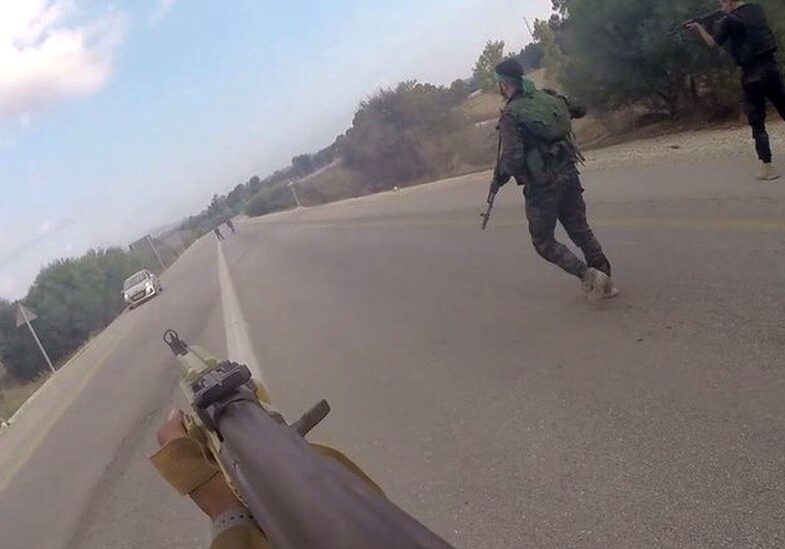Australia/Israel Review
The Last Word: A Tale of Three Cities
Mar 29, 2011 | Jeremy Jones
Jeremy Jones
On a freezing February night in Paris, Cardinal Kurt Koch and Rabbi Richard Marker took turns shovelling soil outside the synagogue in suburban Raincy.
The two men laboured in the chilly air to plant a tree as a living memorial to Ilan Halimi, murdered in 2006 by a gang the police said had “a poisonous mentality that designates Jews as enemies.”
The symbolism of the two men, a European Cardinal and an American Rabbi, in 21st century France, jointly honouring a victim of antisemitism, was palpable.
The next day, Cardinal Philippe Barbarin of Lyons spoke at the site of the Drancy camp, where Parisian Jews were forced to live prior to deportation to camps in “the East”.
In a powerful and passionate presentation, he railed against contemporary antisemitism and spoke of the almost unbelievable progress in the relationship between Jews and Catholics since the Second Vatican Council in 1965.
All of this was part of the 40th anniversary meeting of the International Catholic-Jewish Liaison Committee (ILC), in which I was the first Jewish Australian participant in its four decades of dialogue. The conference was marked by the way it mixed honest and frank acknowledgement of difficulties, tragedies, misunderstandings and challenges with recognition of how far the relationship has developed and creative thinking as to how much further it can develop.
The ILC proved that intense honest debate, on subjects as vexed as religious vilification and Middle East politics, can take place in an atmosphere of civility, humility and mutual respect.
The Nazi era cast a long shadow over discussions in Paris, while Sarajevo is a city physically scarred by war.
The city’s historical legacy as the site of the assassination which precipitated The Great War and more latterly the victim of barbarous assaults during the disintegration of Yugoslavia has taken nothing away from the city’s sublime beauty. Nor from the amazing humanity of its residents.
During a short visit, I had an open and intellectual discussion on the Shoah and current Muslim/Jewish relations with an internationally prominent Islamic figure, lectured to enthusiastic and passionate university students and explored interfaith dialogue with Catholic and Orthodox leaders.
I attended synagogue service, met and learned from an amazing group of committed Jewish community members, and met writers, scholars, politicians and bureaucrats for discussions on multiculturalism, the dramatic events in the Middle East and the future of what Professor Clive Kessler calls “gentle Islam”.
One of my most moving experiences was visiting the historic Jewish cemetery.
The largest monument, stark and dramatic on the snow-covered slope, is a memorial to victims of the Nazis. It is damaged on one side by a shell fired by Serbian forces and on the other by gunshots from the city’s defenders – a result of the cemetery being the “front-line” during the siege of the city in the 1990s.
In a city which lives and breathes recent violence, the optimism and drive of people such as the leaders of the Interreligious Council of Bosnia was inspirational.
The Australian equivalent of that Council, the Australian Partnership of Religious Organisations, marked March 21, “Harmony Day”, in Canberra with events including a round-table in Parliament House with Senators and Members of the House of Representatives. Discussions focused on Australia as the place with “world’s best practise” on interfaith dialogue and canvassed the idea of the establishment of a Parliamentary Friends of Interfaith Group.
This was followed by a forum on “Interfaith Dialogue – The Way Forward”, with active participation of Christians, Muslims, Jews, Hindus, Buddhists, Bahais, Sikhs and Jains.
An observer of the forum would have seen rabbis and priests, hijab-wearing Muslimahs, turban wearing Sikhs and robed Buddhists, in a crowd of people inspired not so much by their religious identification but their common involvement in, and even enjoyment of, debate and dialogue.
It was a reminder of how fortunate we are to have benefited from the inter-religious pioneers of the past and the legacy and blessings, in this country, of cultural diversity and a healthy symbiosis of religion and state.
Tags: Antisemitism
RELATED ARTICLES

Protests were always about the delegitimisation and demonisation of Israel: Joel Burnie on Sky News

AIJAC congratulates MPs Josh Burns and Julian Leeser on the McKinnon Prize




